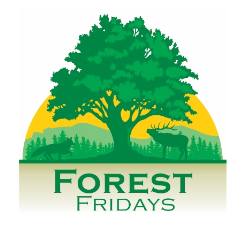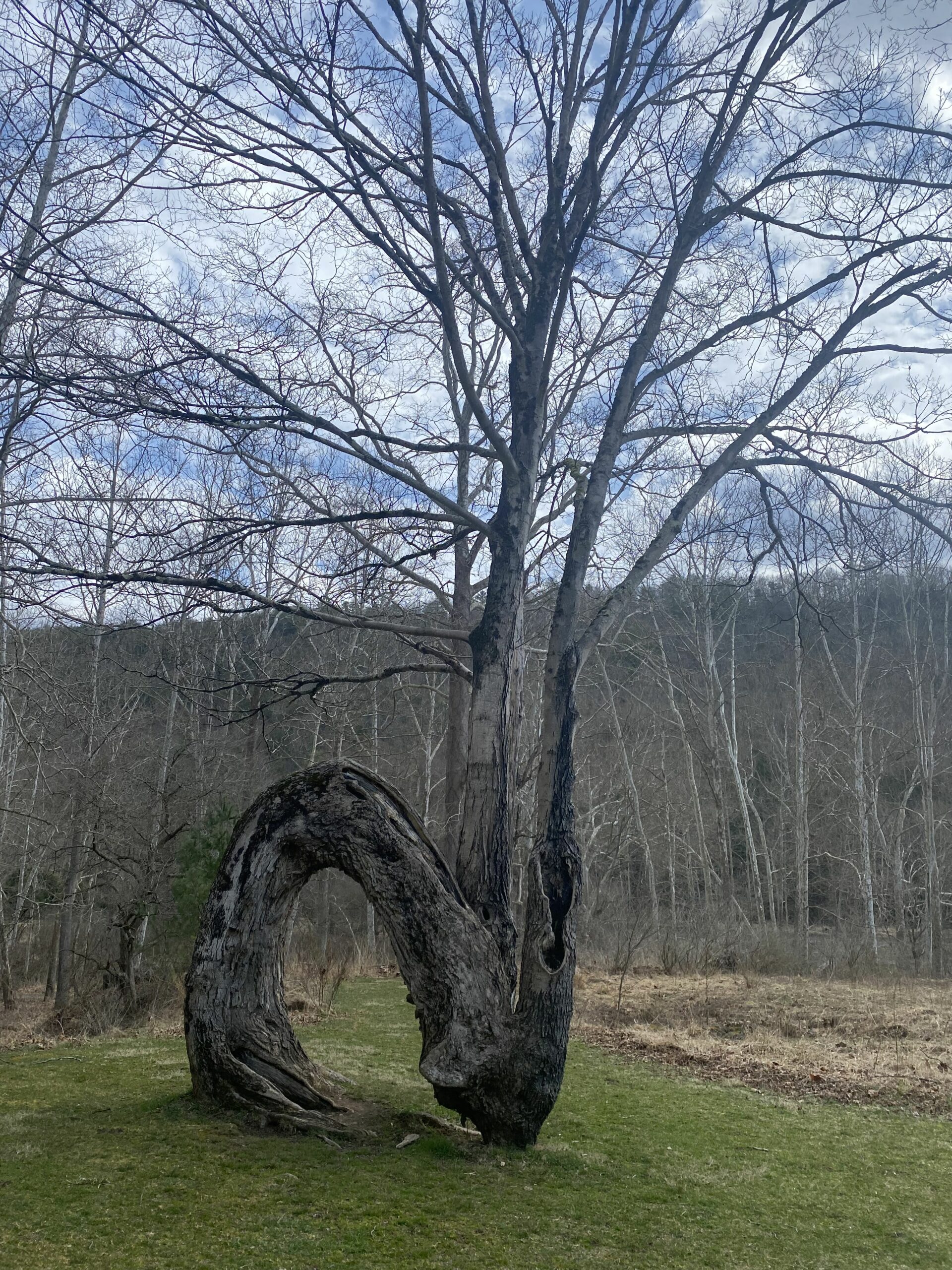Forest Fridays: Oddities in the forest
By Ryan Reed
The forest is an easy place to be struck with wonder. I often find myself staring at something, contemplating the how, what, why, or when while out in the woods. Below are a few forest oddities that may have, at one point in your forest travels, given you a reason to ponder.
Burls
A burl is a woody outgrowth on the trunk or main stem of a tree. They look like large swellings that don’t belong. Burls can be highly sought after by woodworkers who make interesting goods like bowls or other hand-carved items. A burl grows from a tree’s reaction to a pathogen (often fungal), whereby the tree continuously grows layers of wood and bark that encircle the affected area.
Image: Wooden sculpture made from a burl by Wilds Cooperative of PA (WCO) artisan Jack Northrop. Photo was taken by Katie Weidenboerner Deppen for the PA Wilds Center for Entrepreneurship’s Creative Maker Exhibit in 2016.
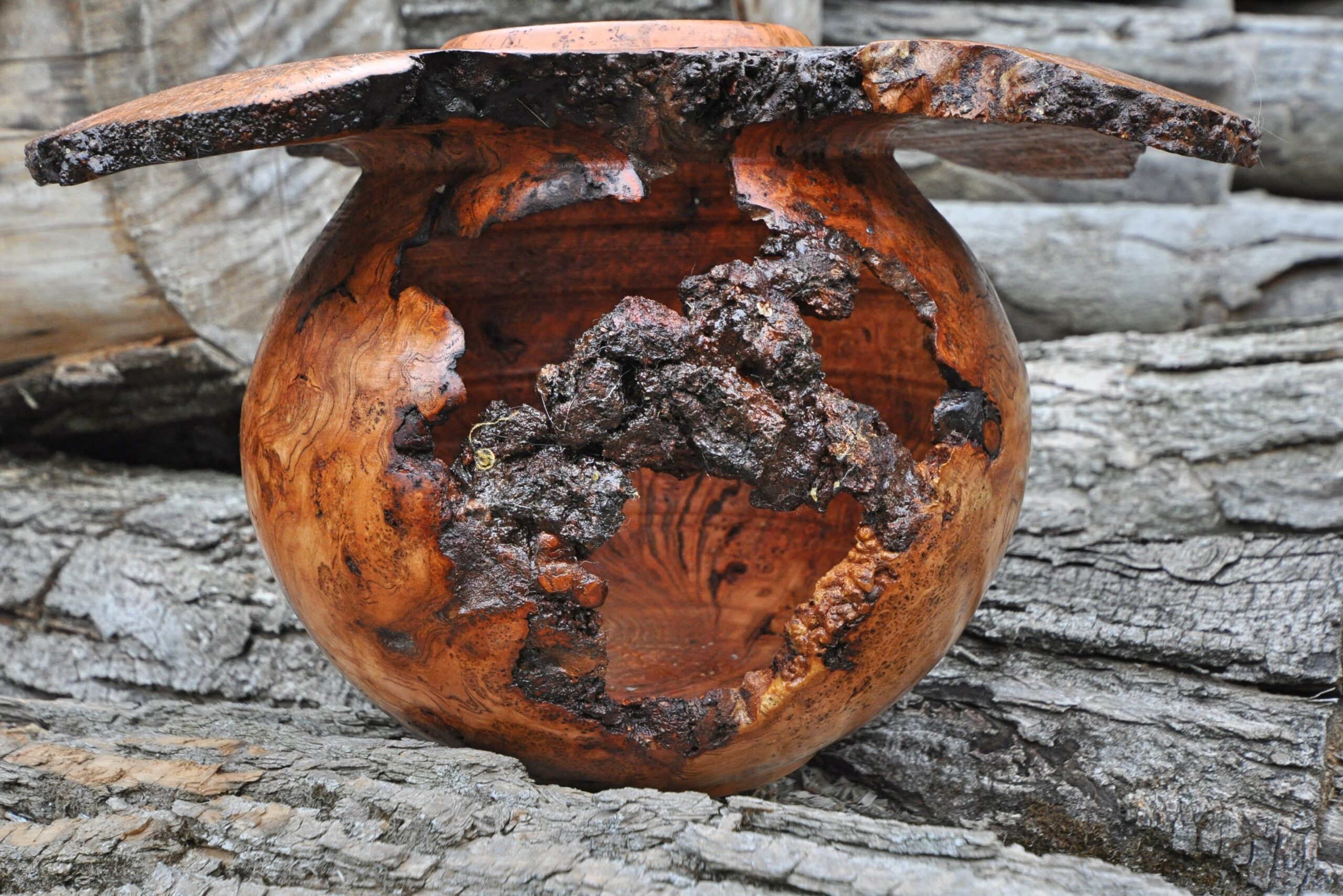
Native American Marker Trees
Trees with odd directionality or shape are sometimes attributed to intentional horticultural practices that Native Americans used to “train” a tree for navigation. Specifically, their odd shapes are reportedly due to bending, tying, or pruning to attain a desired growth pattern, often when a tree was young and pliable. Some foresters may dispute these claims, reasoning that an oddly shaped tree can be explained by natural disturbance. For instance, a windblown tree can fall over, taking the top out of a younger tree. The void, and more importantly, sunnier area left by the windblown tree encourage growth away from younger tree’s center, producing some very odd tree shapes many years later. If oddly-shaped trees are found in an apparent spatial pattern, this can be evidence they were purposely altered.
Image: Although this tree at Sinnemahoning State Park is likely due to natural disturbance, it shows an odd shape. From left to right are Marc Wilken, Britt Madera, Ashley Fosbrink-Horrell, and LaKeshia Knarr.

Huge Boundary Trees
Perhaps you’ve encountered a row of trees along a property border that are much larger than others in the area. These trees are boundary trees that have
eluded the teeth of the chainsaw or crosscut saw. It’s probably not due to the inherent good nature of the timber harvesters that these behemoths remain, but more likely, evidence of a strong aversion to boundary disputes and allegations of timber theft.
Image: Photo of a boundary tree, courtesy of Ryan Reed.
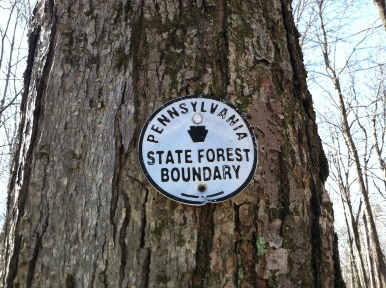
Exposed Roots
You may occasionally notice trees with very weird looking roots. These specimens often result from the forces of erosion by water or wind. Soil (and even rocks) can erode, leaving the root network in place.
Image: Photo of exposed tree roots, courtesy of Ryan Reed.
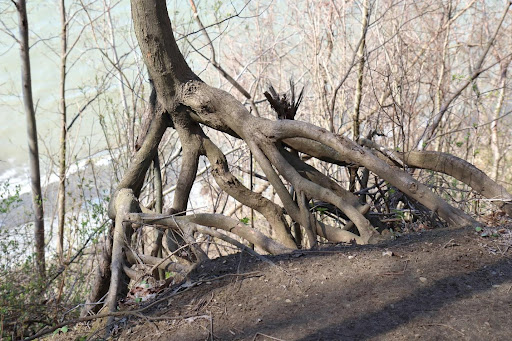
Our forests are filled with wonder. Have you noticed these forest oddities (or others) in your treks?
About the Author: Ryan Reed
Ryan Reed is a Natural Resource Program Specialist in the Department of Conservation and Natural Resources, Bureau of Forestry. He possesses degrees in Wildlife and Fisheries Science and Wildlife Technology, while currently pursuing a master’s degree in Environmental Pollution Control. He has also worked for the Pennsylvania Game Commission, and taught high school sciences for 11 years. He is especially interested in biodiversity and ecology. A lifelong hunting and fishing enthusiast, Ryan resides in Annville, PA.
